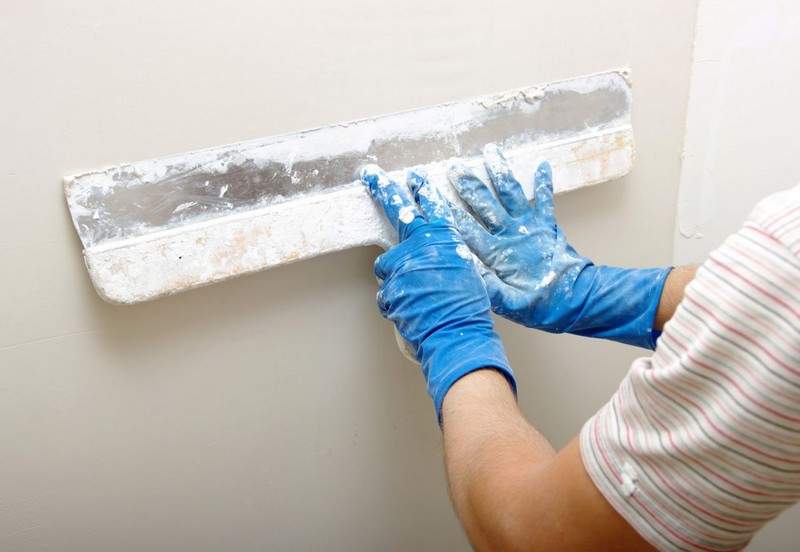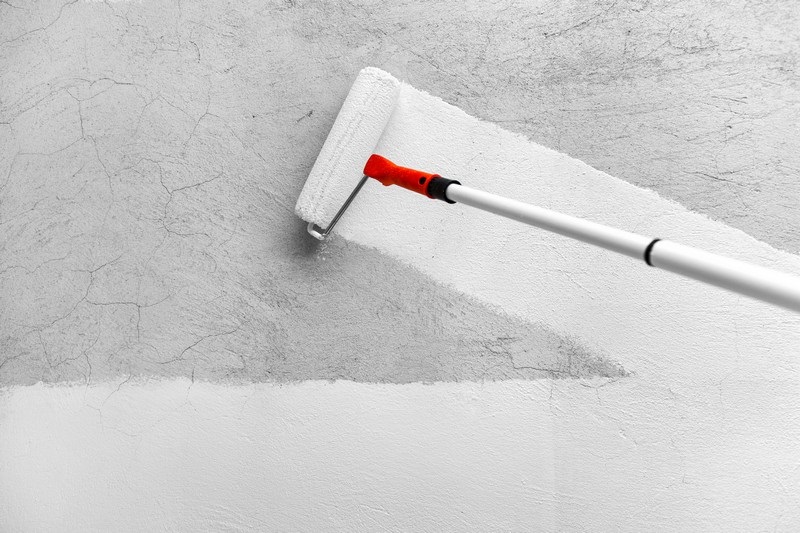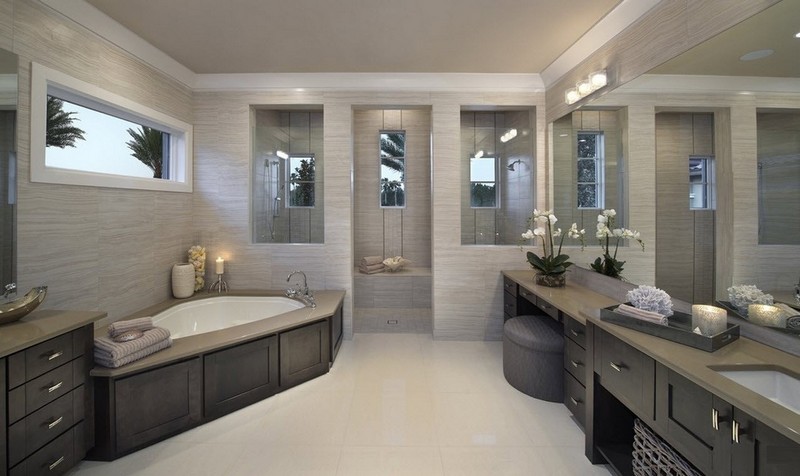Added on 19.01.2017
The bath is one of the most important rooms in the whole house. Therefore, starting a renovation, I want not just to decorate it, but to decorate it stylishly, original and beautiful. In the building materials market, there are many solutions for decorating a bathroom. But the usual wallpaper or tiles are just bored. Whether it is decorative plaster in the interior of the bathroom. Unusual and effective, it can transform even the most standard and ordinary room. Due to the play of tones and an interesting texture, it can act as an independent highlight of the entire repair, although it is convenient in combination with other types of finishes. But it is important to know which plaster to choose and how to use it in specific conditions.
The main features of the material
The bathroom differs from other areas of the house in that it assumes a constant high humidity of the environment. In such conditions, not all types of coatings can hold out for a long time and retain their aesthetics. Therefore, the requirements for them when choosing are serious.

When deciding which plaster is best for the bathroom, you can focus on the reviews of experienced craftsmen. You should immediately opt for moisture-resistant materials for special purposes. Today on the market you can find several options for such solutions from different manufacturers at once. Pay attention to the photo, waterproof decorative plaster for the bathroom has a special marking on the packaging, which helps you to navigate when choosing. In its composition, it contains special reagents that increase the tenacity of the material. It is imperative that antifungal substances are added to the mixture to prevent surface damage by harmful microorganisms.

Types and conditions of use
In order for decorative plaster in the bathroom interior to look not only advantageous, but also to become a practical addition, you need to prepare the coating itself well. It cannot be randomly applied to any walls. The surface must be pre-treated with a special material that will improve its resistance to moisture. For this, traditional plaster under the tiles in the bathroom is suitable. This cement-sand mortar also evens out the walls well. Among the features of the material:
- waterproofing properties;
- resistance to salt loss;
- the ability to regulate the microclimate of the room;
- ease of application.

But this coating is not suitable as a decoration layer. By its nature, it is a rough mixture, the main function of which is to create a base for the main finish. It is used only with decorative plaster, the photo of the result can be seen in the examples.

When designing a bathroom, you can use different types of material. Smooth and textured finishes can be chosen for the coating. A striking example of the first is the Venetian plaster in the bathroom, the photos show its main feature - a glossy structure that imitates natural stone. Special stencils are often used to apply drawings and patterns.
Structural finishing involves the application of relief motifs. Of these, "bark beetle" and pebble decorative plaster in the bathroom are usually used, the photo shows well the rough surface of such coatings. But moisture can accumulate in the cavities; for long-term use, such options are not very practical.

Application features
Working with material involves several stages. The photo shows the decoration of the bathroom with decorative plaster in detail, you can watch the video on the Internet for even more details on how to apply the coating. The workflow involves the following operations:
- Padding. It is necessary to apply 2-3 times to strengthen and hold the base wall covering, to provide additional waterproofing. The first layer is applied abundantly, after it has completely dried, it should be repeated at least once more. The last coating should be done just before finishing the bathroom with decorative plaster. It is better to choose the primer itself with an admixture of quartz sand in order to improve the adhesion of the base coat.

- Application and sealing of the decorative layer. Carried out using grouting. It is done at the stage of material drying. Grouting is carried out with a special solution using a stainless steel falcon, this process is called ironing.
- Drying control. Water-resistant decorative bathroom plaster has an initial drying period of 3-5 hours. But the normal strength of the coating is achieved no earlier than three days after application. If possible, it is better to leave the walls alone for a week, it is recommended not to use the bathroom. During this time, there is a full polymerization of the coating on the walls, it becomes more durable and resistant to moisture.

It is a misconception that bathroom plaster is not the most suitable type of coating. Modern finishing materials are durable, moisture resistant and practical. In terms of durability, they are not inferior to ceramic tiles and are definitely superior to wallpaper. In addition, decorative plaster in the bathroom, the photo of which can be studied for comparison, is the most effective and aesthetic option.
